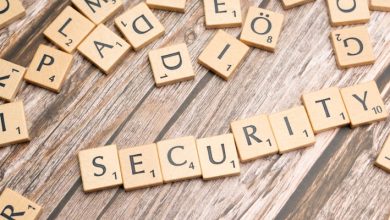How to Protect Your Crypto from Malware and Ransomware

- Understanding the risks of malware and ransomware in the crypto world
- Best practices for securing your crypto assets from cyber threats
- Common types of malware and ransomware targeting cryptocurrency holders
- Steps to take to prevent malware and ransomware attacks on your crypto accounts
- The importance of using secure wallets and exchanges for storing your digital assets
- Recovering from a malware or ransomware attack on your cryptocurrency holdings
Understanding the risks of malware and ransomware in the crypto world
When it comes to safeguarding your cryptocurrency holdings, it is crucial to understand the risks associated with malware and ransomware. Malware is malicious software designed to infiltrate and damage your computer system, while ransomware is a type of malware that encrypts your files and demands payment for their release.
Malware and ransomware can infect your devices through various channels, such as phishing emails, malicious websites, or infected downloads. Once your system is compromised, hackers can gain access to your crypto wallets and steal your funds without your knowledge.
To protect your crypto assets from malware and ransomware attacks, it is essential to take proactive measures. Ensure that your devices have up-to-date antivirus software installed and regularly scan for any suspicious activity. Avoid clicking on links or downloading attachments from unknown sources, as they may contain malware.
Additionally, consider using hardware wallets to store your cryptocurrency securely offline. Hardware wallets provide an extra layer of protection against online threats and keep your funds safe from potential cyber attacks. By staying vigilant and practicing good cybersecurity habits, you can minimize the risk of falling victim to malware and ransomware in the crypto world.
Best practices for securing your crypto assets from cyber threats
When it comes to protecting your crypto assets from cyber threats, there are several best practices you can follow to ensure the security of your investments. One of the most important steps you can take is to use a hardware wallet for storing your cryptocurrency. Hardware wallets are physical devices that store your private keys offline, making them much more secure than software wallets.
Another important practice is to use strong, unique passwords for all of your crypto accounts. Avoid using the same password for multiple accounts, as this can make it easier for hackers to gain access to your funds. Consider using a password manager to generate and store complex passwords securely.
It’s also crucial to keep your software up to date to protect against malware and ransomware attacks. Regularly update your operating system, antivirus software, and cryptocurrency wallets to ensure that you have the latest security patches installed.
Additionally, be cautious of phishing attacks that attempt to trick you into revealing your private keys or other sensitive information. Always double-check the URLs of websites and verify the legitimacy of any emails asking for personal information.
Finally, consider using a VPN when accessing your crypto accounts on public Wi-Fi networks to encrypt your internet connection and protect your data from potential eavesdroppers. By following these best practices, you can significantly reduce the risk of falling victim to cyber threats and safeguard your crypto assets.
Common types of malware and ransomware targeting cryptocurrency holders
Cryptocurrency holders are often targeted by various types of malware and ransomware designed to steal their digital assets. Some common types of malware that are frequently used to target crypto holders include **keyloggers**, which record keystrokes to capture passwords and private keys, **phishing** attacks, which trick users into revealing sensitive information, and **cryptojacking** malware, which hijacks a victim’s computer to mine cryptocurrency without their consent.
Ransomware is another significant threat to cryptocurrency holders, encrypting their files and demanding payment in crypto to unlock them. **WannaCry** and **CryptoLocker** are examples of ransomware that have caused widespread damage in recent years. It is crucial for crypto holders to be aware of these threats and take steps to protect themselves from falling victim to such attacks.
By staying informed about the latest malware and ransomware trends, using **antivirus software**, **firewalls**, and **secure wallets**, and exercising caution when clicking on links or downloading attachments, cryptocurrency holders can reduce their risk of being targeted by malicious actors. Additionally, regularly updating software and implementing **multi-factor authentication** can further enhance security and help safeguard their digital assets from potential threats.
Steps to take to prevent malware and ransomware attacks on your crypto accounts
To prevent **malware** and **ransomware** attacks on your **crypto accounts**, there are several **steps** you can take to **enhance** your **cybersecurity**. **Firstly**, make sure to **keep** your **software** and **antivirus programs** **up to date**. **Regularly** updating your **systems** can help **protect** you from **new** and **emerging threats**. **Secondly**, be **cautious** when **clicking on links** or **downloading attachments** from **unknown sources**. **Phishing** emails are a **common** way for **cybercriminals** to **install malware** on your **device**. **Thirdly**, consider using a **hardware wallet** to **store** your **cryptocurrency**. **Hardware wallets** are **offline devices** that **provide an extra layer** of **security** against **online attacks**. **Lastly**, **backup** your **crypto wallet** **regularly**. **In the event** of a **ransomware attack**, having a **backup** can **help** you **recover** your **funds** without **having** to **pay** the **ransom**.
The importance of using secure wallets and exchanges for storing your digital assets
It is crucial to emphasize the importance of using secure wallets and exchanges when storing your digital assets. Ensuring the safety of your cryptocurrency is paramount in the face of increasing malware and ransomware threats.
By choosing secure wallets and exchanges, you can significantly reduce the risk of your crypto falling into the wrong hands. These platforms offer advanced security features such as two-factor authentication, encryption, and biometric verification to safeguard your assets.
Moreover, reputable exchanges and wallets regularly undergo security audits and penetration tests to identify and address any vulnerabilities. This ongoing security assessment ensures that your crypto is stored in a safe environment.
Additionally, using secure wallets and exchanges can provide you with insurance coverage in the event of a security breach. This added layer of protection can offer peace of mind knowing that your assets are secure and protected.
Recovering from a malware or ransomware attack on your cryptocurrency holdings
If you have fallen victim to a malware or ransomware attack on your cryptocurrency holdings, it is crucial to act swiftly to minimize the damage. The first step is to disconnect the infected device from the internet to prevent the spread of the malicious software. Next, contact a reputable cybersecurity expert to assess the extent of the attack and provide guidance on recovery options.
Once you have identified the malware or ransomware responsible for the breach, take steps to remove it from your system. This may involve running a full antivirus scan, restoring your device to a previous backup, or reinstalling the operating system. It is essential to ensure that all traces of the malicious software have been eradicated to prevent future attacks.
After securing your device, assess the impact of the attack on your cryptocurrency holdings. Check your accounts and wallets to determine if any funds have been stolen or compromised. If you have suffered financial losses, report the incident to the relevant authorities and seek legal advice on recovering your assets.
Moving forward, take proactive measures to protect your cryptocurrency holdings from future malware and ransomware attacks. Keep your software and security systems up to date, use strong, unique passwords for all accounts, and enable two-factor authentication where possible. Be cautious when clicking on links or downloading files from unknown sources, and consider storing your cryptocurrencies in offline wallets for added security.
By following these steps and remaining vigilant against cyber threats, you can safeguard your cryptocurrency holdings and minimize the risk of falling victim to malware or ransomware attacks in the future. Remember that prevention is always better than cure when it comes to protecting your digital assets from malicious actors.



